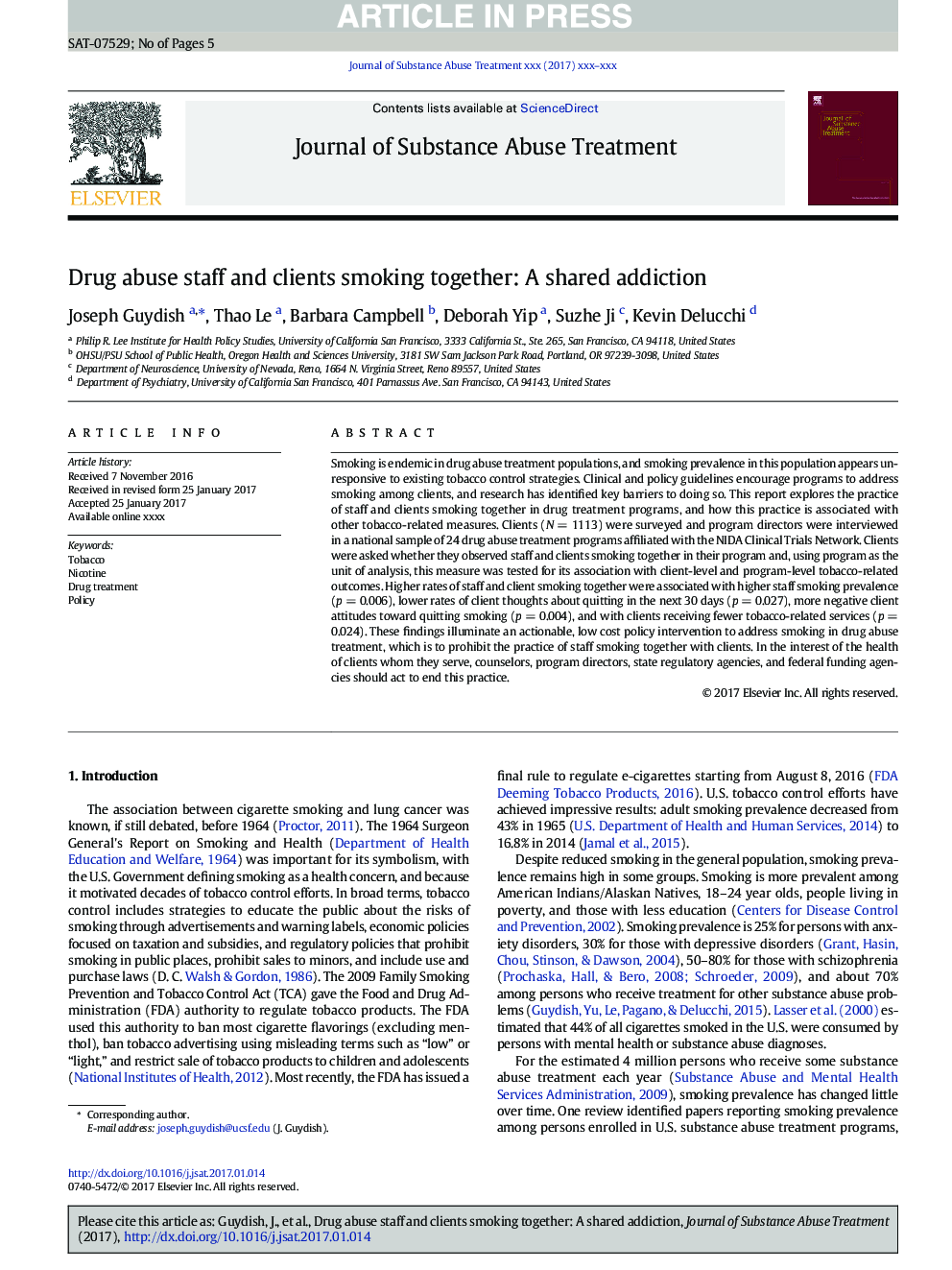| Article ID | Journal | Published Year | Pages | File Type |
|---|---|---|---|---|
| 4932356 | Journal of Substance Abuse Treatment | 2017 | 5 Pages |
Abstract
Smoking is endemic in drug abuse treatment populations, and smoking prevalence in this population appears unresponsive to existing tobacco control strategies. Clinical and policy guidelines encourage programs to address smoking among clients, and research has identified key barriers to doing so. This report explores the practice of staff and clients smoking together in drug treatment programs, and how this practice is associated with other tobacco-related measures. Clients (N = 1113) were surveyed and program directors were interviewed in a national sample of 24 drug abuse treatment programs affiliated with the NIDA Clinical Trials Network. Clients were asked whether they observed staff and clients smoking together in their program and, using program as the unit of analysis, this measure was tested for its association with client-level and program-level tobacco-related outcomes. Higher rates of staff and client smoking together were associated with higher staff smoking prevalence (p = 0.006), lower rates of client thoughts about quitting in the next 30 days (p = 0.027), more negative client attitudes toward quitting smoking (p = 0.004), and with clients receiving fewer tobacco-related services (p = 0.024). These findings illuminate an actionable, low cost policy intervention to address smoking in drug abuse treatment, which is to prohibit the practice of staff smoking together with clients. In the interest of the health of clients whom they serve, counselors, program directors, state regulatory agencies, and federal funding agencies should act to end this practice.
Keywords
Related Topics
Life Sciences
Neuroscience
Biological Psychiatry
Authors
Joseph Guydish, Thao Le, Barbara Campbell, Deborah Yip, Suzhe Ji, Kevin Delucchi,
